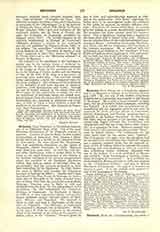

Betanzos, JUAN DE.—Unfortunately very little is known as yet of this official, who has left such valuable works on the Indian traditions and language of Peru. He was a Spaniard by birth and came to Peru at an early day. Whether or not he was still on the Island of Santo Domingo in 1539, as notary or scribe, is uncertain. He was at Cuzco in 1542 and officiated as quasi-interpreter at the investigation of Indian historical traditions ordered by Vaca de Castro. (See Peru.) Even then he had acquired a solid acquaintance with the Quichua idiom. He married an Indian girl of the Inca tribe and composed the first catechism known to us in the Quichua language. The manuscript is now in the National Archives at Lima. In 1551 he finished his book entitled “Suma y Narration de los Incas etc” (dedicating it to the viceroy Antonio de Mendoza), one of the most important sources for ancient Peruvian history. Unfortunately only a part of this work is still known to of the Mount of Olives. It is not mentioned in the Old Testament; in the New Testament it comes into prominence as the Village of Mary, Martha, and Lazarus, and as the scene of the great miracle of the raising of Lazarus to life by Jesus. Here Jesus often received hospitality in the house of his friends, Mary, Martha, and Lazarus; and near this village Jesus ascended into Heaven. The most accepted etymology of the name is Beit-‘Ania’, “House of Misery”. The Talmud derives the name from Beit-Hine, or Bet’uni, “House of Dates”. The modern name of the village is el-‘Azariye, so called from the memory of Lazarus. The initial letter of the name Lazarus is elided in Arabic after the 1 of the article.
Some believe that the present village of Bethany does not occupy the site of the ancient village; but that it grew up around the traditional cave exist. It embodies the earliest accounts of Indian traditions from Bolivia and extreme southern Peru, and as they were gathered by Betanzos within less than fifteen years after the landing of Pizarro, they can hardly be much tainted by contact with Europeans. Of the life of Betanzos, after 1551, practically nothing is known.
AD. F. BANDELIER

